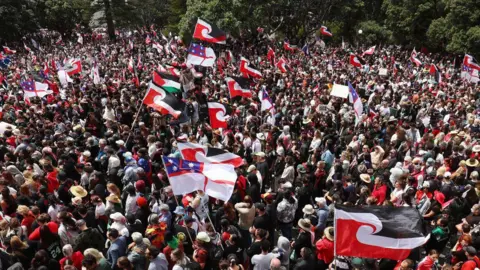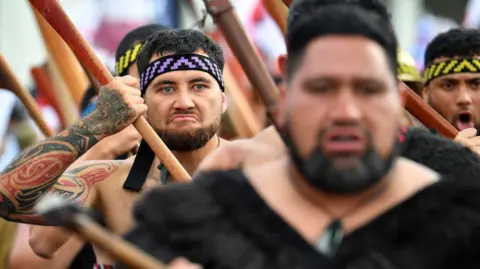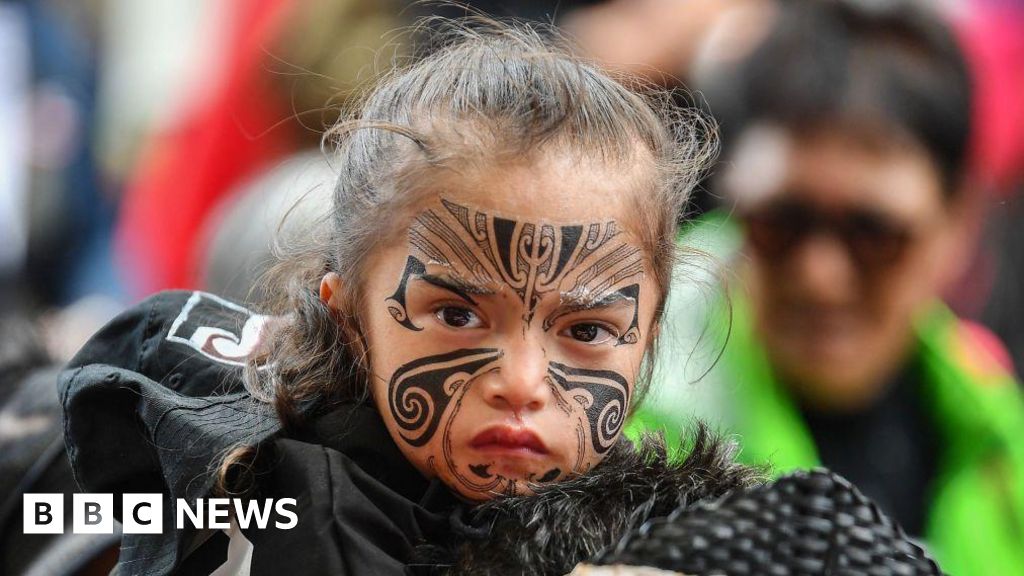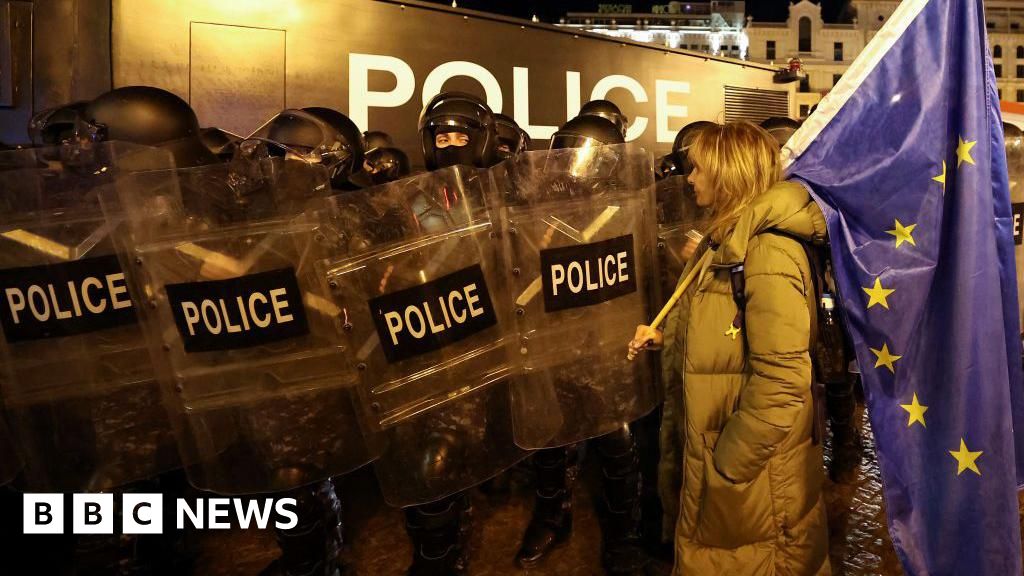 Getty Images
Getty ImagesMore than 40,000 people have protested outside New Zealand’s parliament against a controversial bill seeking to reinterpret the country’s founding document between British colonisers and Māori people.
Tuesday’s demonstration marked the end of a nine-day hīkoi, or peaceful protest, that had made its way through the country.
The Treaty Principles bill argues that New Zealand should reinterpret and legally define the principles of the 1840 Treaty of Waitangi, a document seen as fundamental to the country’s race relations.
Many critics see it as an attempt to take rights away from Māori people. Supporters of the change say the treaty no longer reflects a multicultural society.
Tuesday’s march brought together activists and other opponents of the bill.
The hīkoi swelled to one of the biggest in the country’s history, with many participants draped in colours of the Māori flag, as they marched through the capital Wellington.
It easily dwarfed the 5,000-strong crowd that turned up for land rights in 1975, and double the size of another major hīkoi in 2004, which rallied for shore and sea ownership rights.
Wellington’s rail network saw what might have been its busiest morning ever as the hīkoi poured through the capital, according to the city’s transport chair Thomas Nash.
The Māori Queen Ngā Wai hono i te pō led the delegation into the grounds surrounding the Beehive, New Zealand’s parliament house, as thousands followed behind.
The bill is not likely to pass into law but the conversations and the division are set to continue. It will be another six months until a second reading.
It was introduced by a junior member of the governing coalition, the Act political party.
The party’s leader, David Seymour, says that over time the treaty’s core values have led to racial divisions, not unity.
“My Treaty Principles Bill says that I, like everybody else, whether their ancestors came here a thousand years ago, like some of mine did, or just got off the plane at Auckland International Airport this morning to begin their journey as New Zealanders, have the same basic rights and dignity,” Seymour, who has Māori ancestry, told the BBC.
“Your starting point is to take a human being and ask, what’s your ancestry? What kind of human are you? That used to be called prejudice. It used to be called bigotry. It used to be called profiling and discrimination. Now you’re trying to make a virtue of it. I think that’s a big mistake.”
 Getty Images
Getty ImagesMeanwhile, inside the Beehive, MPs discussed the bill.
Among them was Prime Minister Christopher Luxon, who said it would not pass into law – despite him being part of the same coalition as Act.
“Our position as the National Party is unchanged. We won’t be supporting the bill beyond second reading and therefore it won’t become law,” Luxon said, according to the New Zealand Herald.
“We don’t think through the stroke of a pen you go rewrite 184 years of debate and discussion.”
New Zealand is often considered a world leader when it comes to supporting indigenous rights – but under Luxon’s centre-right government, there are fears those rights are now at risk.
“They are trying to take our rights away,” Stan Lingman, who has both Māori and Swedish ancestry told the BBC before Tuesday’s protest. “[The hikoi is] for all New Zealanders – white, yellow, pink, blue. We will fight against this bill.”
Stan’s wife Pamela said she was marching for her “mokos”, which means grandchildren in the Māori language.
 Getty Images
Getty ImagesOther New Zealanders felt the march has gone too far.
“They [Māori] seem to want more and more and more,” said Barbara Lecomte, who lives in the coastal suburbs north of Wellington. “There’s a whole cosmopolitan mix of different nationalities now. We are all New Zealanders. I think we should work together and have equal rights.”
Equality, though, is still a way off, according to Debbie Ngarewa-Packer, co-leader of Te Pāti Māori (Maori Party).
“We can’t live equally if we have one people who are the indigenous people living ‘less than’,” she argued. What the coalition government is doing is “an absolute attempt to divide an otherwise progressive country and it’s really embarrassing”.
New Zealand’s parliament was brought to a temporary halt last week by MPs performing a haka, or traditional dance, in opposition to the bill. Footage of the incident went viral.
“To see it in parliament, in the highest house in Aotearoa, there’s been a real state of surprise and I think disappointment and sadness that in 2024 when we see politics and the Trump extremes, this is what the Māori are having to endure,” said Debbie Ngarewa-Packer. “It’s humiliating for the government because we [New Zealand] are normally seen as punching above our weight in all of the great things in life.”
Protest organisers on Monday taught participants the words and moves of the rally’s haka, with the audience enthusiastically repeating the lyrics written on a large white sheet.
“This isn’t just any normal hīkoi – this is the hīkoi of everybody,” said grandmother Rose Raharuhi Spicer, explaining that they’ve called on non-Māori, Pacific Islanders and the wider population in New Zealand to support them.
This was the fourth hīkoi Rose had been on. She comes from New Zealand’s northernmost settlement, Te Hāpua, directly above Auckland. It’s the same village that the most famous hīkoi started from, back in 1975, protesting over land rights.
This time, she brought her children and grandchildren.
“This is our grandchildren’s legacy,” she said. “It’s not just one person or one party – and to alter [it] is wrong.”



